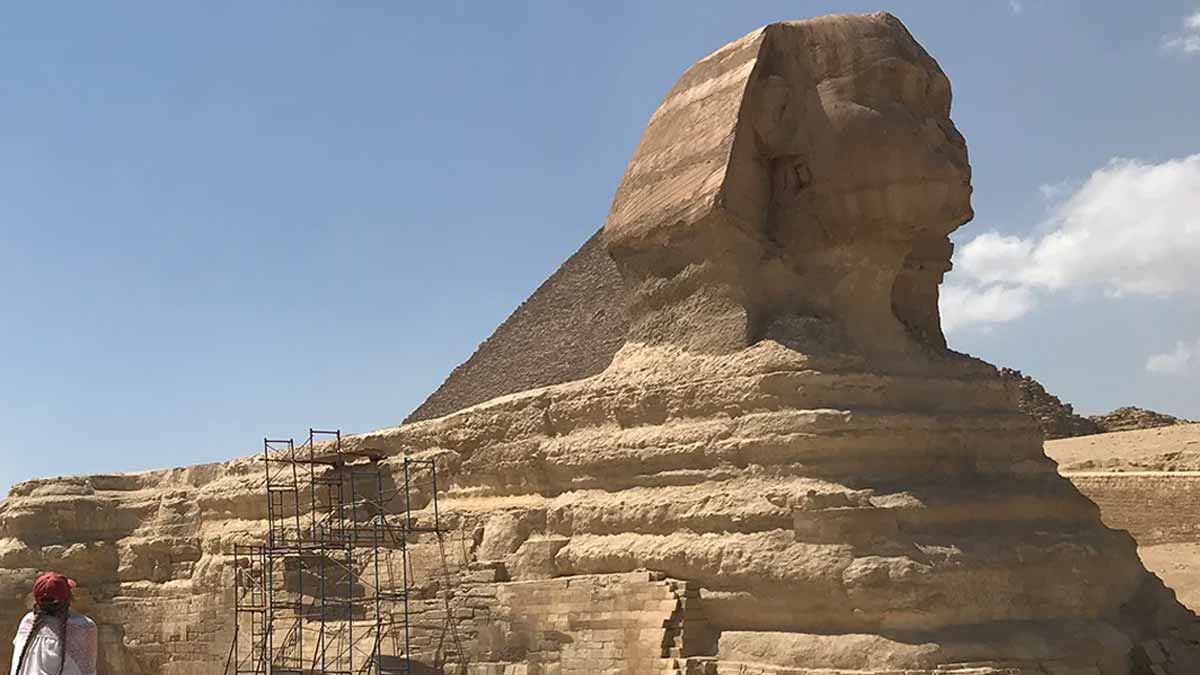Crowds chase a once-in-a-lifetime view, yet expectations collide with noise, pressure, and hurried steps at the gates. Between awe and frustration, Egypt faces a pivotal choice about how visitors move, behave, and remember the Pyramid of Giza. Authorities are rewriting the rules to protect heritage and improve comfort, promising order without killing wonder, care without spectacle, and a calmer, well-guided path through an extraordinary landscape. The scene is changing, and with it the promise of a better visit for everyone.
Why the Pyramid of Giza needs a new visitor plan
Over-visitation squeezes patience and threatens fragile stonework. Egypt logged nearly 17.5 million visitors in 2024 and aims for 30 million by 2030, ambitions that multiply pressure on paths, staff, and local life. Without crowd management, even wonder becomes exhausting, and the Pyramid of Giza risks losing part of its magic.
Officials now frame a practical mission: create calm, cut friction, and keep the view unforgettable. The plan focuses on visitor flow, clear signage, trained personnel, and simple buying steps. Each piece reduces stress points that once turned a bucket-list moment into a rushed stop under the desert sun and heat.
At the core sits a principle: protection earns loyalty. Heritage survives when access is dignified and predictable. Tourists feel safer, locals feel respected, and guides work in a fairer setting. A better system preserves memory, supports revenue, and aligns expectations with reality, not just glossy images from travel brochures worldwide.
How the new access, routes, and rules will work
The roadmap begins with a new main access on the Cairo–Fayum road to spread entries and reduce bottlenecks near the busiest gates. Staggered arrivals limit queues, while perimeter changes reroute private cars and tour buses smartly. Safer crossings and clearer staging areas lower confusion, honking, and tense confrontations daily.
Inside the perimeter, digital tools do the heavy lifting. Online ticketing trims cash lines, while timed slots smooth peaks. Standardized rates, official kiosks, and visible complaint channels curb haggling and hidden add-ons. When payments are simple and rules are posted, visitors feel in control, and operators face consistent oversight everywhere.
Restoration gains room in this calmer ecosystem. Crews schedule work without blocking paths. Fragile tombs receive attention, artifacts remain protected, and sensitive corridors reopen with limits. With street clutter pushed back, guides can focus on storytelling, not crowd control, and staff can direct flows rather than firefight constant small crises.
From complaints to fixes: scams, pressure, and safer space
For years, complaints piled up online. Travelers felt overwhelmed by hard selling, unofficial offers, and disorganized tours. A viral thread summed up the mood: beautiful monuments, difficult surroundings. With TikTok accelerating word-of-mouth, one bad hour became a cautionary reel. Reputations cracked faster than officials could respond or reassure disappointed guests.
Egypt’s answer links clarity with consequences. Licensed guides wear visible credentials; rate cards match what visitors pay; penalties deter scams. Designated vendor zones cut swarming at choke points. When boundaries are enforced, the space breathes again. People browse by choice, not pressure, and families feel safe to linger.
This is also about memory. A fair welcome shapes the story visitors carry home, and that memory echoes across future bookings. When the moment around the Pyramid of Giza feels calm, travelers share joy instead of warnings. Confidence returns, and the destination competes on quality rather than on volume alone.
Modern mobility on the plateau: buses, welfare, and the Pyramid of Giza
Animal welfare moved from footnote to priority. Reports of overworked horses, thin donkeys, and injured camels stained the destination’s image. Advocacy groups documented abuses and urged bans. In response, authorities launched welfare programs at major sites, mandating feed, shade, water, veterinary checks, and penalties when operators ignore the baseline rules.
Mobility is being redesigned around comfort and sustainability. Electric buses now run inside the necropolis, reducing noise and fumes while maintaining capacity. Rides feel orderly, predictable, and accessible for families and seniors. Cleaner air also protects stone surfaces, since dust and exhaust contribute to wear on paths and delicate masonry.
Change must be steady to last. Phasing out harmful practices while keeping livelihoods matters, so training and incentives support operators during the shift. With better transport and clearer rules, the area becomes a model for heritage sites facing over-tourism: improve the journey, and the destination shines brighter without adding strain.
Numbers, partners, and a path to long-term reputation
Behind policy sit hard numbers and private partners. Tourism contributes ten percent of national output, with about 6.6 billion dollars at stake. The target is ambitious: thirty million visitors by 2030. That scale needs investment, maintenance, and logistics tuned to heritage. Orascom Pyramids invests millions to rewire access and services.
Infrastructure only works when culture breathes through it. Markets still bustle, the Nile still anchors daily rhythms, and hospitality remains a signature. Yet operational discipline matters. With routes clarified, vendors organized, and staff trained, storytelling lands better. Travelers connect dots between sites, from Luxor’s temples to the plateau outside Cairo.
Success will be measured by memory, not counts alone. If the hour near the Pyramid of Giza feels generous, visitors share delight, not warnings, across social feeds. That word-of-mouth protects value better than ads. Reputation compounds when systems function, and guardianship feels present yet light, like shade promised at noon.
Why calmer logistics today can protect wonder for generations to come
If the ground feels calmer, the view grows larger. Egypt’s shift ties dignity to access, and care to movement. With clearer routes, fair rules, and modern transport, the plateau can breathe while pride returns. Visitors leave with gratitude rather than stress, and locals gain room to work well. That story protects the Pyramid of Giza more effectively than walls ever could, because protection lives in behavior, not fences, and in choices made every day.
